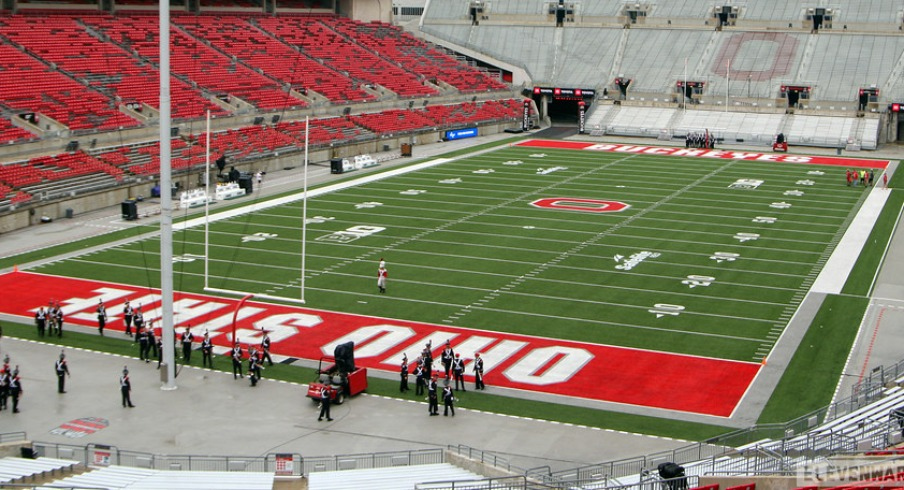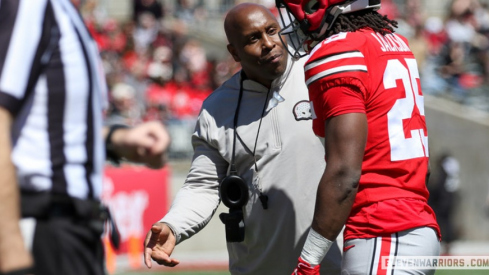I have mostly given up on my lawn.
The smartest move I've ever made as a homeowner was freeing myself from the shackles of giving even a tiny amount of crap about the makeup and consistency of the various types of grass cultivars in my front and back yards (for the record, they're both mostly clover and some kind of alien weed that resembles but is not quite actual grass).
Sure, it gets mowed and trimmed and decluttered of various nuts and twigs, but only out of a grudging obligation and not any real affection or some slavish devotion towards making my lawn appear anything other than "kind of green".
It's just too much. Contending with an unending parade of calamities big (tree limbs falling, rabid squirrel intrusions) and small (making incidental eye contact with neighbors as I'm sweating my ass off trying to watch an instructional YouTube video on changing a lawnmower's oil) and the sinking feeling that no matter what you do, you will never make the lawn look like it does in King of the Hill, is enough to make anyone say the hell with it and eat popsicles on the porch instead.
So when Ohio State made the move to field turf for Ohio Stadium in the mid-2000's, I wasn't a big fan, but a part of me got it. Grass upkeep is an enormous pain in the neck, and possibly disingenuous discourse around "water tables" and "field level" aside, it makes sense that the OSU athletic department would much rather pay people to do an installation once and then tell them to kick rocks for a decade than make a fleshy, bearded janitor with a chip on his shoulder and a heart of gold come in twice a week for maintenance.
Also: what if that person (or people) approaches their work with the enthusiasm that I do with my yard? The 2006 Ohio State-Michigan game, is what.
That's the whole thing, but pick any part of the game to watch (I recommend the entire game, it's dope) and you can see just how bad it got. As someone who stormed the field afterwards, I can verify that the playing surface was some unholy combination of chewed up hamster bedding and a decade's supply of hair scraps from Great Clips. This was expensive, too: Ohio State spent hundreds of thousands of dollars in 2006 alone laying and re-laying grass in a vain attempt to defy God after seemingly every home game.
Things got so bad in the middle of the season that Ohio State brought out a horticulture professor to explain to the angry masses exactly why the field looked like boiled ass, and his response was essentially "it's rainy and cold, I'm not a lawn magician, welcome to the Midwest." This was before assuring fans that the field would look amazing for the Michigan game.
[After the Michigan game, in which the field looked and was terrible] Coach Jim Tressel advocated reverting to an artificial surface after players complained that the new sod laid this season was slippery and dislodged in chunks.
"What I am pushing for is a consistent surface," Tressel said. "And then, the bonus of artificial turf would be the chance to have a lot more use."
Field turf it is! Ever since then, Ohio Stadium (sorry, Safelite Field at Ohio Stadium) has been covered with an intricate mesh of grass-like plastic, cushioned by tiny rubber pellets that are magnetically attracted to the nether regions of your shoes.
After a decade and a half, a refresh of the field turf last year might've been worth it if only to get rid of the Arial Bold endzone font, but it also got rave reviews from players like running back TreVeyon Henderson:
Henderson was among the players who occasionally lost his footing on the old surface.
“It was very slippery,” he said. “There were some times I rolled my ankle out of nowhere. Now that doesn't happen. We've been practicing on the new turf, and it feels it feels great now. It's softer. A lot of the turf last year was very hard. It's safer and we're able to cut better.”
Henderson then fractured a bone in his foot against Toledo in the third game of the season.
The plan is to put grass in DKR once we finish the indoor project.. https://t.co/wGmxggssBs
— Chris Del Conte (@_delconte) May 14, 2023
The Texas Longhorns are shifting back to grass this season, likely in part because of increased concerns about player safety, but also likely because players themselves are starting to become a larger part of the narrative of safety and health in football in general. Football players, in the NFL particularly, are starting to become much more vocal about their playing conditions and the risks inherent.
This article from the NFL Player's Association cites increased injuries as a reason to make the shift to grass:
(P)layers have a 28% higher rate of non-contact lower extremity injuries when playing on artificial turf. Of those non-contact injuries, players have a 32% higher rate of non-contact knee injuries on turf and a staggering 69% higher rate of non-contact foot/ankle injuries on turf compared to grass.
Former Ohio State defensive lineman Nick Bosa has also made some clear statements on how he feels about artificial playing surfaces ("They're bad"), which he suffered an ACL injury on in New York, and he is part of a growing chorus of players who are speaking out against it.
That attitude hasn't permeated down to the college level en masse quite yet, but I think that eventually it will as college players continue to exercise their autonomy as athletes in ways that even 15 years ago they might not have felt confident in doing.
And they should; football is a dangerous game, and if the playing surface isn't adequate to keep athletes safe, then they are the first who should talk (and be asked) about why that's a problem.
I doubt that Ohio State will make the shift back to grass anytime soon, especially so soon after a lengthy and expensive replacement, but this is a sterling example of why athlete voice matters. Maybe the Buckeyes still love the field turf, but it's their knees and ankles and feet on the line, so maybe they should be the first and last people asked about any changes in the future.
Ultimately this isn't about the grass. It's about the willingness of fans, teams, and institutions to see football players as more than a commodity, and instead look to them as an authoritative opinion as to what their playing conditions should be.
If that means busting out the supercomputers to figure out how to grow a lawn in Ohio, so be it.


